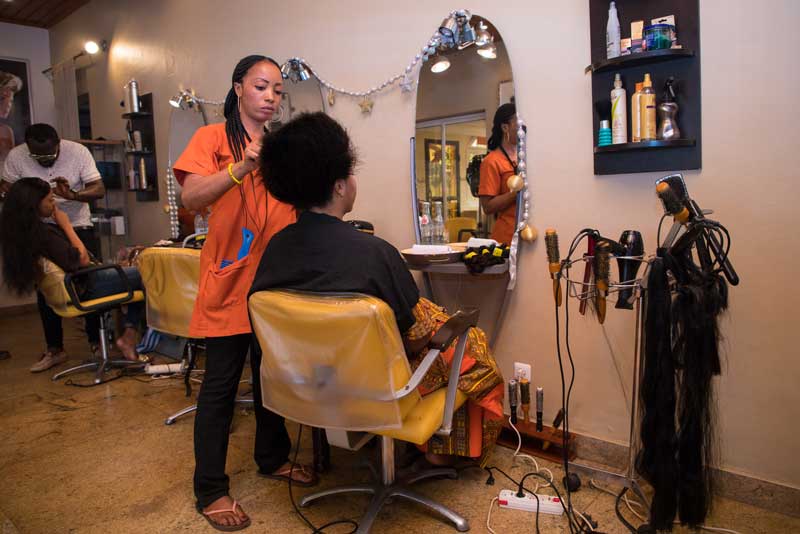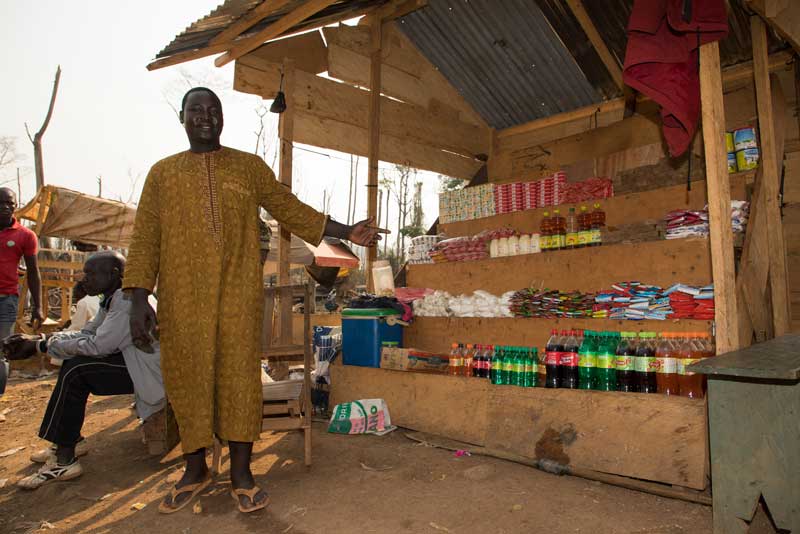Although Marie-Paule Effagon has access to electricity, she and her family have experienced frequent power outages—sometimes for as long as two days at a time.
“The food I had bought for the month would perish, my kids would not be able to study after school and the level of criminality and aggressions in the streets would increase considerably during that period,” said Effagon, a 48-year-old teacher living in Yaounde, Cameroon.
But she could be considered one of the lucky ones: just 60 percent of Cameroon’s population has access to electricity, and this percentage is much less in rural areas. For those who have access to electricity, the high cost is a significant household expense.
To improve the lives and long-term economic prospects of Effagon and other Cameroonian citizens, the government of Cameroon created a plan whose scope and vision are as vast as the need itself: to increase access to power to 88 percent of all people in electrified areas by 2022. The initiative also aims to increase generation and transmission capacity to meet demand that is expected to quadruple by 2035.
To achieve this, IFC and the World Bank are helping the government construct the Nachtigal Hydropower Plant—a privately owned and operated 420-megawatt (MW) power plant on the Sanaga River. InfraVentures, an upstream unit of IFC developing bankable projects, helped develop and structure the project in its early stages, spending $13 million of development capital. This project is now IFC’s largest power investment in Africa. In addition to IFC’s equity of €60 million and debt financing of €110 million for the project, IFC helped put together a €916 million loan package from development finance institutions and commercial banks. We also provided interest rate swaps to help the project company mitigate interest rate risk. Key project development and structuring support came from across the World Bank Group.
The €1.2 billion Nachtigal facility will increase the country’s power-generation capacity by nearly a third and bring clean, affordable power to millions. Selling electricity at around €0.06 a kilowatt hour, Nachtigal will provide very cheap power that will help sustain economic growth and save the country $100 million in generation costs annually. Construction of the plant—which is expected to begin operations in 2023—will create up to 1,500 direct jobs, of which 65 percent will be locally sourced.

Hydropower’s Promise in Cameroon
Increasing energy access is key to Cameroon’s goal to become a middle-income, industrialized country with poverty levels below 10 percent by 2035. Energy is among the priority areas identified in the country’s growth and poverty reduction strategy, which emphasizes the need for agricultural diversification, increased productivity, and large-scale public investment projects.
There’s no shortage of promise: Cameroon has the third largest hydropower development potential in sub-Saharan Africa, estimated at over 12,000 MW. But across the region, complexities and risks often deter the private sector from considering investment opportunities.
Nachtigal—with project development and structuring support from the World Bank Group—is different. Participation from across the institution was critical because it helped find ways to bring in private capital, which can build and operate these plants in an efficient manner while not burdening the country’s finances with more debt.

Innovative Methods to Meet Key Goals
IFC began developing the Nachtigal project five years ago, through its InfraVentures window, working upstream as joint developer. We worked closely with Cameroon’s government and French utility company Électricité de France (EDF) to confirm the technical, financial, and environmental feasibility of the project, and address bureaucratic bottlenecks to create conditions that would allow the project to move forward. IFC’s presence at the early development phase of the project also increased its appeal to commercial lenders by leveraging IFC’s structuring capabilities. That also ensured the project would be developed according to international environmental and social standards.
In parallel, World Bank staff supported the country’s reform efforts to unlock the hydropower potential. The Lom Pangar dam, financed by the International Development Association (IDA), regulates the flow on the Sanaga River, which improves the hydrology along the whole river. The World Bank is also assisting with basin management and dam safety across Cameroon, and electricity produced by Nachtigal will be transported by a transmission-network company that has recently been created and is supported by a specific $325 million World Bank project.
Critical sector reforms were jointly supported by IFC and the World Bank to ensure a conducive environment for public-private partnership (PPP) development. Furthermore, nearly €450 million in project-financing guarantees from the World Bank and the Multilateral Investment Guarantee Agency (MIGA) proved crucial in crowding in international capital.
Nachtigal sets a benchmark for local-currency-denominated financing—the debt package includes a Central African CFA franc-denominated tranche of approximately €170 million with an unprecedented underlying maturity of 21 years.
IFC’s engagement in Cameroon’s power sector spans two decades. IFC participated in the financing of the Dibamba and Kribi power plants, commissioned in 2009 and 2013 respectively, and supported the privatization of the national distribution company by providing advisory services and arranging a €250 million syndicated loan.
Join the conversation: #IFCmarkets
Published in May 2019

